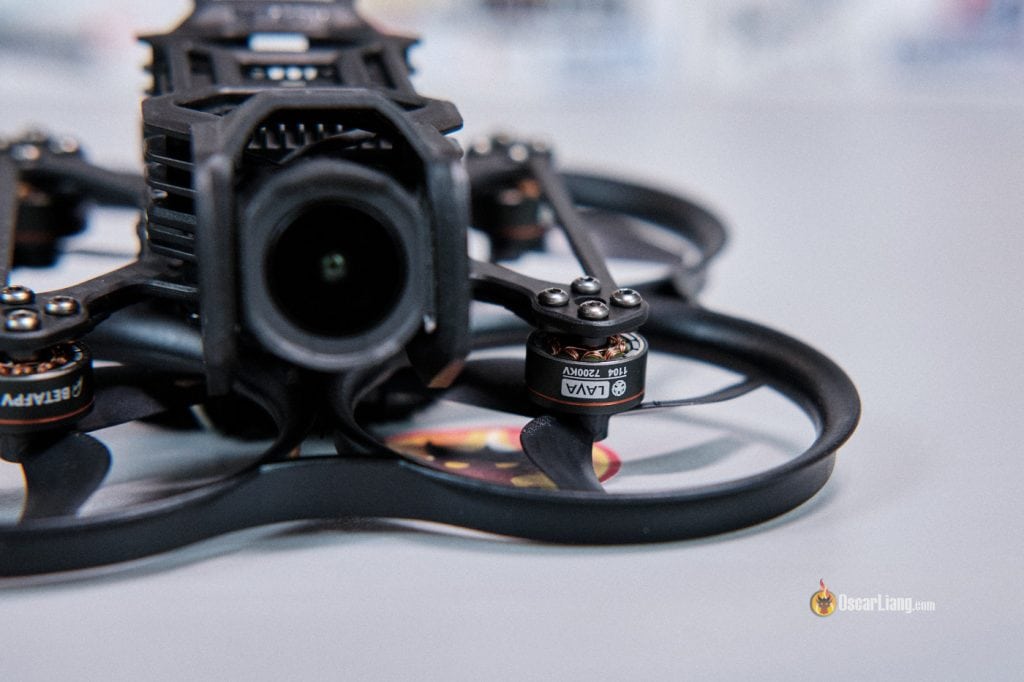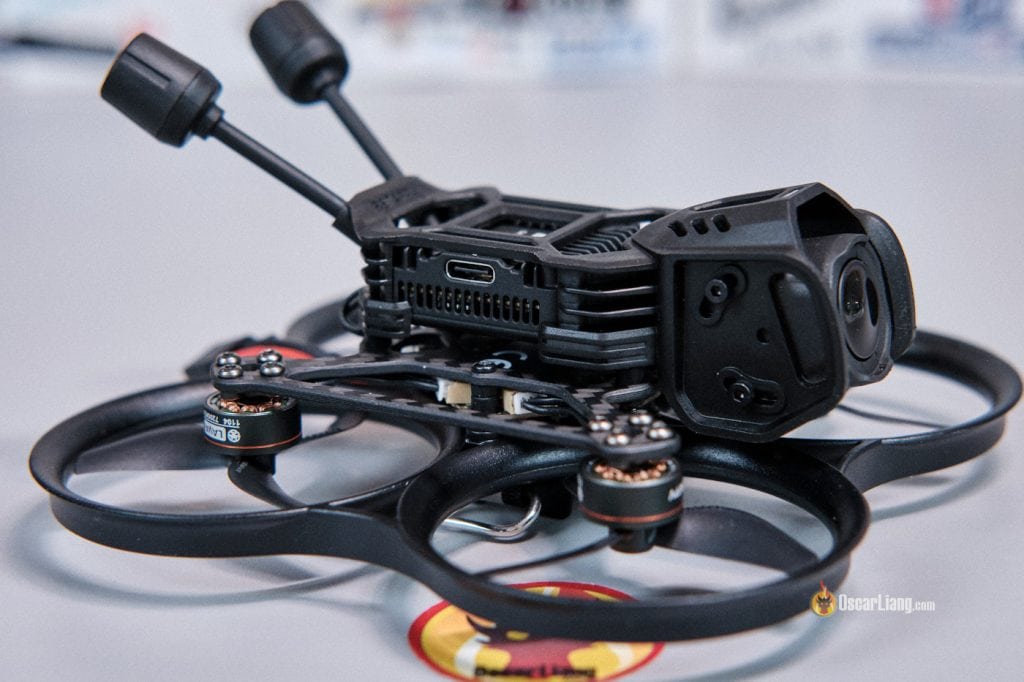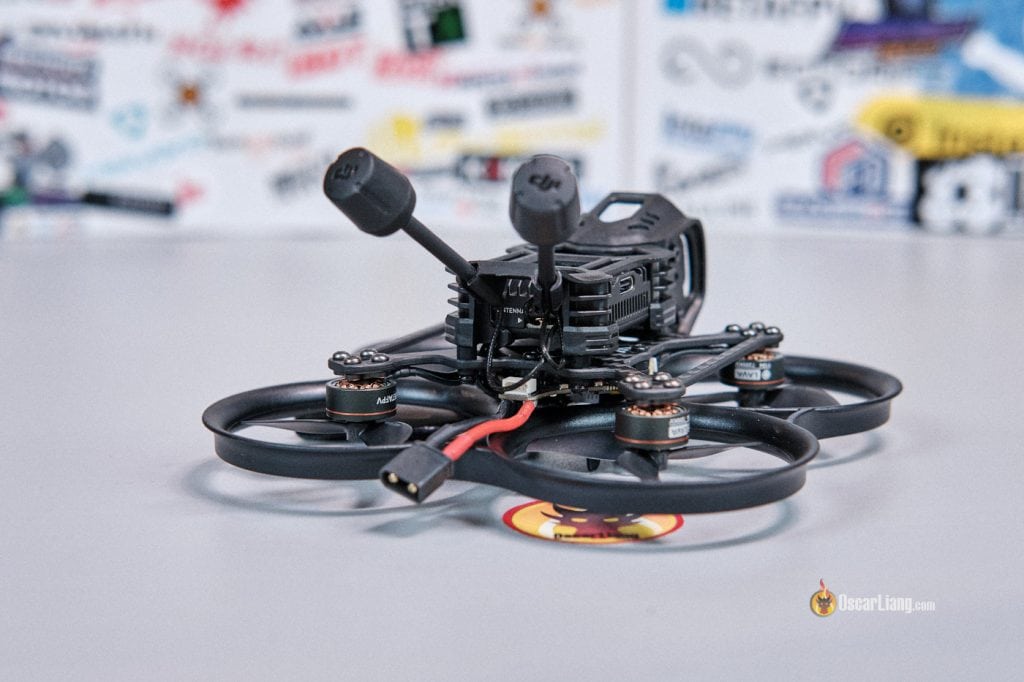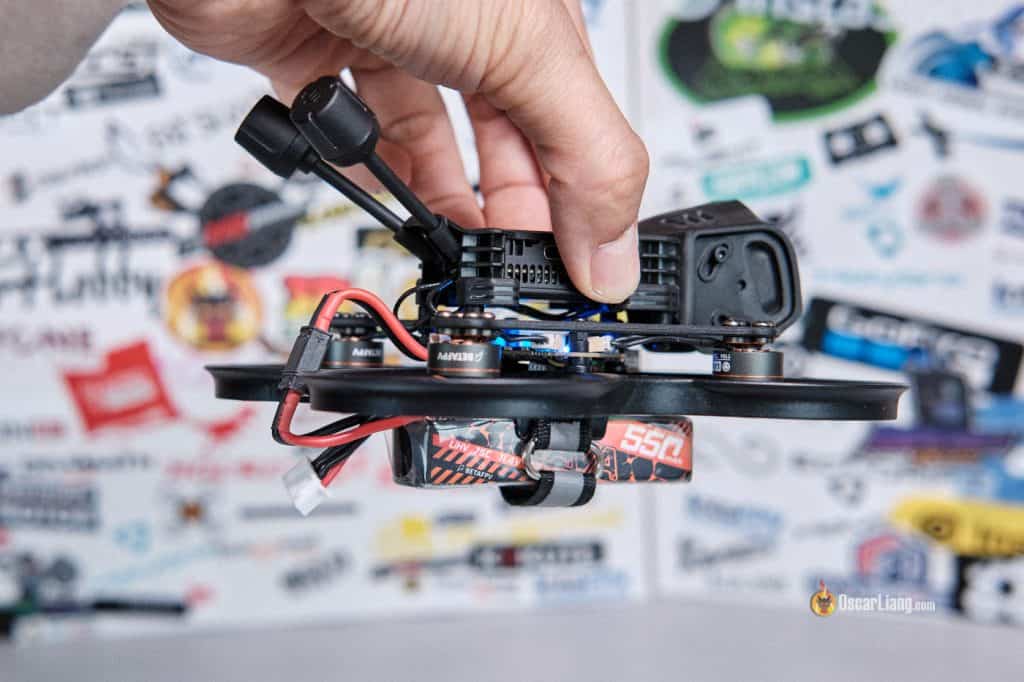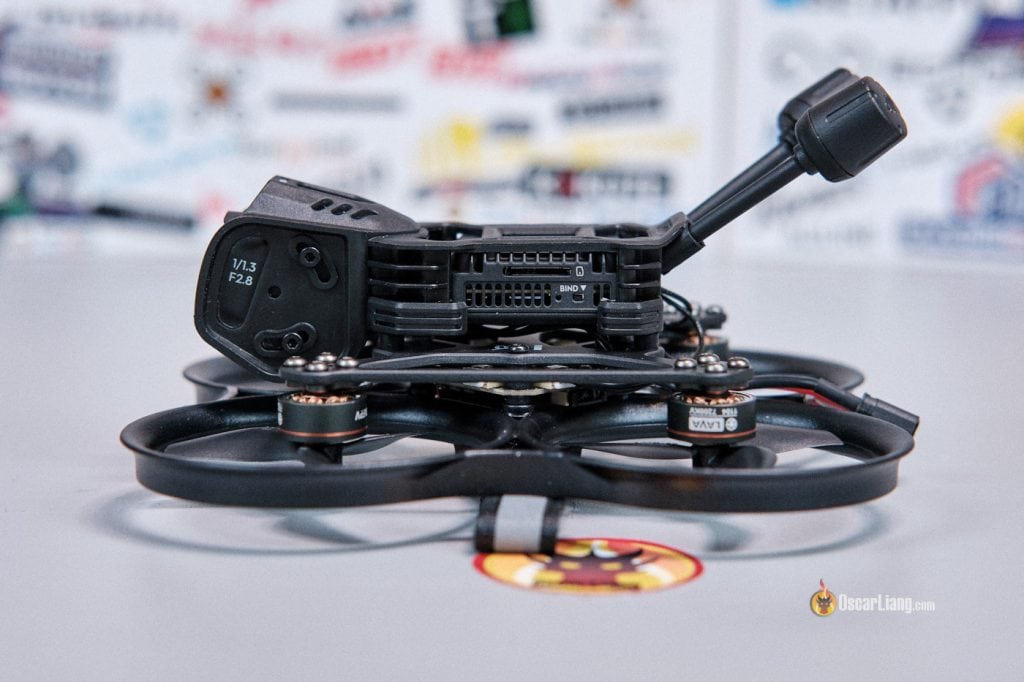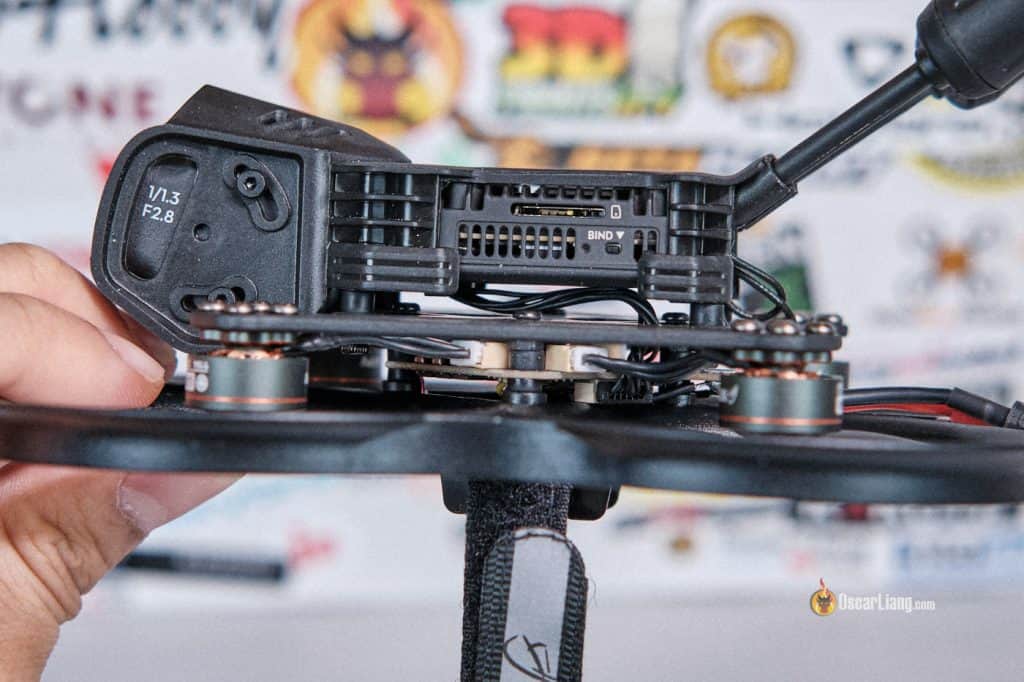After testing completely different variations of the BetaFPV Pavo20 Professional—together with the DJI O3, NightFire version, and now the DJI O4 Professional—I can confidently say: they’re just about the identical. However should you’re questioning which model to decide on or how the O4 improve modifications issues, right here’s all the things I’ve discovered.
New to FPV? Begin with our Cinewhoop Purchaser’s Information: https://oscarliang.com/cinewhoop/
The place to Purchase
You may get the Pavo20 Professional O4 version from the next distributors:
Included Equipment:
- 1 × LED Strip Accent Package (Ice Blue)
- 4 × Spare Propellers
- 1 × USB-C Adapter Cable
- 1 × Spare DJI O4 Professional Air Unit 6-pin Cable
Notice that battery is just not included, get some Lava 3S 550mAh LiPo right here: https://oscarliang.com/product-vrfd
Get some spare 2.2inch propellers right here: https://oscarliang.com/product-8nfq
Specs
If you happen to’re accustomed to the earlier Pavo20 Professional with O3, the brand new O4 Professional model is actually equivalent when it comes to core {hardware}:
| Pavo20 Professional (O3 PNP) | Pavo20 Professional (O4 Professional PNP) | |
| Wheelbase | 93.7mm | |
| Battery Connector | XT30 | |
| Battery Slot | 20mm width, limitless peak | |
| FC | F4 2-3S 20A AIO FC V1 | |
| Body | Pavo20 Professional Brushless Body | |
| Motor | LAVA Sequence 1104 7200KV Brushless Motors | |
| Props | Gemfan 2218 3-Blade Propellers (1.5mm Shaft, 2.2″ triblade) | |
| Flight Time | 6:40 with 3S 550mAh LiHV | |
| Digital camera Filter Set up | Vertical | |
| RX Model | ELRS, TBS, SBUS | ELRS, SBUS |
| HD VTX Bracket | O3 Air Unit Bracket | O4 Air Unit Professional Bracket |
| Weight | 108g (with O3) | 107g (with O4 Professional) |
| Supported VTX | DJI O3 Air Unit/ Caddx Vista Package / RunCam Hyperlink (with O3 Air Unit Bracket) | DJI O4 Air Unit Professional (with O4 Air Unit Professional Bracket) |
| Really useful Battery | 3S 450mAh, 550mAh, 650mAh LiPo/LiHV | |
Design and Construct: O4 vs O3 vs NightFire
Let’s get this out of the way in which: the pusher-style body, motors, flight controller, and props are all the identical throughout all these variations of the Pavo20 Professional.
The principle distinction is the brand new digital camera cage, designed particularly for the DJI O4 Professional Air Unit. It’s a smooth, injection-molded mount that gives higher antenna routing, and total aesthetics. In comparison with the O3’s mount, the O4 cage seems cleaner and feels extra refined.
Surprisingly, the O4 model is barely lighter than the O3, regardless of utilizing the inventory DJI O4 antennas. It’s because the O4 Air Unit is lighter than the O3, although the burden distinction is minimal and doesn’t noticeably have an effect on flight efficiency.
Utilizing Authentic O4 Professional Antennas
One small gripe: I want BetaFPV included shorter dipole antennas, like they did with the O3 model. They’re not solely lighter, but additionally extra sturdy in crashes. The inventory O4 antennas are solely press-fitted into the mount, which means they’ll simply come out throughout a crash and presumably harm the delicate U.FL connectors and wire.
If you happen to’re involved about sturdiness:
- Contemplate gluing the antennas into place.
- Or higher but, swap them for dipoles to save lots of ~4g and scale back threat.
Sure, you could possibly argue that the inventory antennas provide higher vary—however the true limiting issue right here is the ELRS receiver antenna that’s buried below the FC, not the video system. And for the reason that Pavo20 Professional lacks GPS, you don’t actually need to fly it far anyway. For that reason, dipoles must be high-quality.
Discipline of View and Prop Guard
You may discover the prop guard showing within the backside corners of your goggles. That is because of the extremely extensive area of view (FOV) of the O4 Professional digital camera, particularly if you find yourself in 4:3 mode. Nevertheless, when you run the footage by means of Gyroflow for stabilization, these prop guards normally get cropped out, so it’s not a serious concern.
Battery Mounting and Payload
The drone makes use of a normal battery strap, providing you with flexibility to make use of varied 3S LiPo sizes, together with 3S 450mAh, 550mAh and 650mAh. With a 3S 550mAh, the full AUW (All-Up Weight) is available in round 150g.
Notice: the Pavo20 Professional is just not designed to hold a GoPro or full-size HD digital camera. If you happen to actually need to add an exterior HD cam (e.g., Insta360 GO or Bare GoPro), you’ll must 3D print your personal mount—and hold it gentle. Extra weight will shortly have an effect on each flight efficiency and battery life.
Accessibility and Maintanence
Accessing the DJI O4 Professional’s SD card and USB port is easy, due to the good design of the body and digital camera cage.
To avoid wasting weight, BetaFPV changed the usual USB-C port on the flight controller with a smaller 4-pin JST connector. Meaning you’ll want to make use of the included USB adapter when connecting to Betaflight—a small trade-off for a lighter construct.
The drone’s building is de facto easy. The digital camera cage is mounted to the drone’s physique utilizing solely 4 bolts. It’s straightforward to assemble or take aside, which is useful for fast repairs. The tender mounting for the digital camera appears to do a great job of eliminating jello.
Upgrading from DJI O3 to O4 Professional
Already flying the Pavo20 Professional with DJI O3 and occupied with upgrading?
Excellent news: You solely must buy the brand new digital camera cage designed for the O4 Professional. No want to purchase a complete new drone! The O4 mounts with the identical four-screw configuration, and the adjustable digital camera tilt allows you to fly with near-zero angle for cinematic-style pictures.
This makes the Pavo20 Professional platform extra modular, and an incredible long-term funding.
Flight Efficiency
By way of flight traits, the Pavo20 Professional with DJI O4 Professional flies virtually identically to the O3 and NightFire editions. Similar energy, responsiveness, dealing with, and management authority.
I examined it in average wind as nicely (10–12 mph) and was impressed by how nicely it dealt with. No noticeable jello even when flying aggressively, and it presents easy management for each informal cruising and precision cinematic actions.
Let’s be sensible, although—this isn’t a freestyle drone. It doesn’t have the facility or punch of an open-prop quad. However for low-speed, close-proximity cinematic flying, it’s perfect. The built-in prop safety additionally makes it safer to make use of round individuals or in tight areas.
I get about 5 to six minutes of flight time on a 3S 550mAh LiHV battery, about 4 to five minutes on 450mAh and simply over 6 minutes on 650mah. Nevertheless, greater battery doesn’t appear to supply important longer flight time however makes it fly worse – 720mAh could be the largest pack I might use with the Pavo20 Professional.
The Pavo20 Professional isn’t significantly loud by cinewhoop requirements attributable to its comparatively small dimension, nevertheless it’s nonetheless noisy sufficient that I wouldn’t advocate flying it indoors—until, in fact, you’re searching for a divorce 😀 If you would like one thing appropriate for indoor flying, it’s best to persist with 1S tiny whoops. Take a look at my high suggestions right here: https://oscarliang.com/best-tiny-whoop/#Greatest-75mm-Tiny-Whoops
Pavo20 Professional vs GEPRC Cinelog30 V3
In comparison with the GEPRC Cinelog30 V3 I just lately reviewed, the Pavo20 Professional is:
- Smaller, making it extra appropriate for flying in tight areas.
- Lighter, however with much less energy and payload capability.
- Extra restricted in freestyle capacity attributable to its compact dimension.
The Cinelog30 V3, alternatively:
- Extra environment friendly and presents longer flight time.
- Extra highly effective and might carry heavier payload (even full dimension GoPro).
- It’s due to this fact extra versatile in numerous flying types.
Nevertheless, each drones use light-weight plastic prop guards so as to hold the burden down, which means neither is constructed to resist onerous crashes. But when I used to be going to crash I might somewhat decide the Pavo20 as a result of it’s lighter the influence will likely be much less, and in contrast to the Cinelog, the digital camera received’t come out in crashes as a result of it’s onerous mounted which makes life simpler.
Setup
Earlier than the primary flight, I did the next:
- Put in the 2 O4 antennas within the antenna mount.
- Eliminated the protecting movie from the digital camera lens.
- Plug in a smoke stopper, and join a battery and check the drone and see if it powers up appropriately. It is best to hear the ESC/motor initiation beeps.
- Personally I’d keep away from putting in the LED strip to save lots of weight.
Firmware
- The flight controller (FC) board goal is BETAFPVF405, and it comes preloaded with Betaflight firmware model 4.5.0. For inventory CLI Diff, see right here.
- ESC Firmware: Bluejay, 0.19 (C-X-70)
- ELRS Receiver Firmware Goal: Generic ESP8285 2.4GHz RX, firmware 3.3.0
Betaflight Setup
Remaining Ideas: Is It Value It?
If you happen to’re searching for the smallest cinewhoop with DJI O4 Professional assist, the Pavo20 Professional is my high advice.
You may get the Pavo20 Professional O4 version from the next distributors:
The design is strong because it has confirmed beforehand with the DJI O3. It carries the full-size O4 Air Unit with out feeling underpowered, and its small footprint makes it perfect for each indoor and tight outside environments. It’s not constructed for aggressive freestyle or crashing—however for easy, cinematic flights, it performs admirably.
If you have already got the O3 model, there’s not an enormous purpose to improve until you need the higher digital camera efficiency of the O4 Professional. However should you’re deciding between the 2, go together with the O4 Professional model. It’s simply higher throughout.





